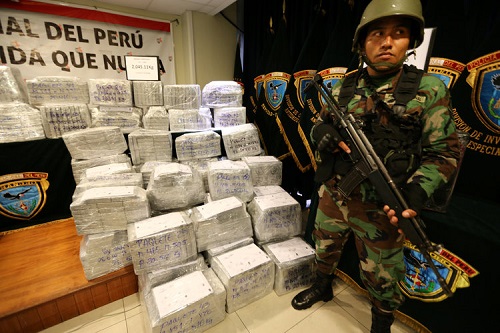Reuters photo
By
Ricardo Swire
Over the past five years drug trafficking trends have showcased swollen European drug consumer markets. In less traditional Asian and European markets the need for cocaine and heroin significantly increased. Heroin retails at approximately €30 per gram, while one-fifth can be purchased for €10. Serbia’s high demand, coupled with its location on a prime regional smuggling route, frustrates enforcement efforts.
In March 2018 a multi-unit counter-narcotics operation intercepted one and a half tons of cocaine belonging to Serbian mafias headquartered in Peru. According to Peruvian National Police (PNC) reports Serbians traffickers work closely with local cocoa growing family clans based in the Apurimac, ENE and Mantaro River Valleys (VRAEM). The July 6, 2014 murder of one Serbian trafficker at a McDonald’s restaurant in Miraflores Peru was glowing evidence of such partnerships.
PNC Homicide Division detectives surmised the victim was one of a six member Serbian trafficking syndicate that operated in Peru, his violent termination atonement for US$200,000 he stole from his Serbian trafficking colleagues. Prior to his murder the Serbian criminal character used bogus documentation to obtain a DNI identity of “Nicholas Bonavia Wong.” An internal security report informed that his Serbian assassins illegally crossed the Ecuador/Peru land border two days after.
The new market drug demand has forged high-value collaborations between Asian/European criminal organizations and ultra-modern transnational drug trafficking cartels. In Europe one ounce of cocaine retails for between US$130 and US$185. The international drug market’s directional change is additionally reflected in Central and South America’s booming drug trade activity. In Bolivia La Paz Route 36 doubles as the world’s first “cocaine lounge,” packages of the valuable white powder sold from off-road vending trays. Balkan criminal syndicates guarantee entry points and market links within Western Europe, where one kilo of cocaine costs US$53,000.
Serbian crime groups use Argentina, Brazil and Uruguay as corridors to export their European cocaine consignments. A two year combined American/Brazilian/Serbian intelligence led operation in Brazil intercepted 1,370 pounds or 620 kilos of cocaine, US$1.2 million cash, thirty-one buildings, three boats and fifteen luxury vehicles. Patterns show the Serbian mafia has operated in Brazil for no less than ten years to date. Serbian criminal networks provide manpower to several Latin American cocaine syndicates. On one occasion three Serbian bodyguards, assigned to a notorious Bolivian drug trafficker, were killed in Bolivia.
Ricardo Swire
Ricardo Swire is the Principal Consultant at R-L-H Security Consultants & Business Support Services and writes on a number of important issues.



No Comments Yet!
You can be first to comment this post!